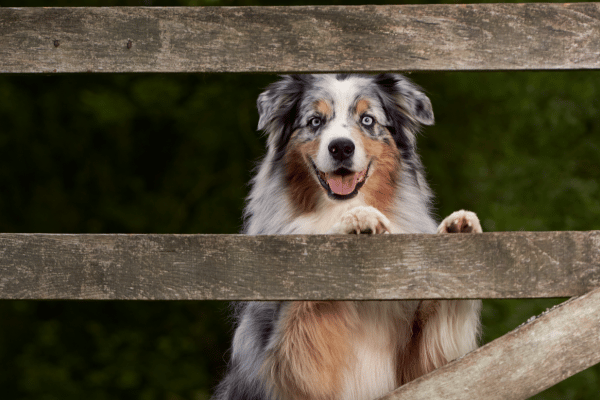Explore the German Shepherd Protective Nature, a trait defining this noble breed’s character, ensuring they are more than just pets but loyal guardians and family members.
Essential Training for German Shepherd’s Protection

German Shepherds, originating from Germany, are revered for their intelligence and loyalty. This breed’s protective nature isn’t incidental but a result of selective breeding. Initially bred for herding and guarding, they have evolved as versatile workers, excelling in roles like police and military dogs. Their instinct to protect is deeply ingrained, making them reliable protectors. However, this trait necessitates responsible training to channel their protective instincts positively.
Effective training and socialization are crucial for a German Shepherd’s development. These dogs are highly trainable, responding well to positive reinforcement. Early socialization exposes them to various stimuli, ensuring they grow confident and well-behaved. Training should include basic obedience and advanced skills, enhancing their protective nature without encouraging aggression. A well-trained German Shepherd distinguishes between normal and threatening situations, making them excellent family pets and guardians.
Understanding the German Shepherd Protective Nature is vital for potential owners. These dogs require consistent training and exercise to maintain their physical and mental well-being. Neglecting their training can lead to behavioral issues, including unnecessary aggression. Therefore, adopting a German Shepherd means committing to their training and care, ensuring they grow into well-adjusted, protective, and loving family members, embodying the best of their protective and loyal nature.
Managing Health and Nutrition of German Shepherds
Adequate health care and nutrition are paramount for a German Shepherd‘s well-being. This breed is prone to certain health issues, such as hip dysplasia and skin problems. Regular veterinary check-ups, a balanced diet, and exercise are essential. Nutrition should be tailored to their life stage and activity level. Preventive care, including vaccinations and parasite control, is also crucial. By ensuring proper health care, the German Shepherd Protective Nature can flourish in a healthy body.
German Shepherds need mental stimulation alongside physical exercise. Their intelligent nature craves challenges, making them suitable for agility and advanced obedience training. Mental exercises can include puzzle toys, scent work, and training sessions that stimulate their minds. This not only keeps them physically fit but also mentally sharp, reducing the chances of behavioral issues. Regular interaction and varied activities will ensure your German Shepherd remains engaged and content, reflecting positively on their protective instincts.
The German Shepherd’s double coat requires regular grooming. This breed sheds throughout the year, with heavy shedding during seasonal changes. Regular brushing helps manage shedding, keeping their coat healthy and reducing hair accumulation in your home. Grooming is also a bonding activity, strengthening your connection with your dog. Nail trimming, ear cleaning, and dental care are equally important. A well-groomed German Shepherd not only looks good but also stays comfortable and healthy.
German Shepherd’s Socialization and Behavioral Traits
Socialization is a cornerstone in shaping a German Shepherd’s temperament. Introducing them to various environments, people, and other animals from an early age is imperative. This process helps them develop confidence and prevents fear-based aggression. A well-socialized German Shepherd is more adaptable, friendly, and less likely to exhibit unwanted behaviors. They become well-rounded companions, capable of differentiating between normal social interactions and actual threats, thus enhancing their protective nature without compromising social harmony.
Understanding a German Shepherd’s body language is key to preventing aggression. Signs like raised hackles, stiff posture, and excessive barking indicate discomfort or perceived threats. Recognizing these signals allows for timely intervention, averting potential aggressive responses. Training them to respond to commands in stressful situations is also crucial. This breed’s protective instinct should be managed through positive reinforcement, avoiding situations that might trigger undue aggression, thereby ensuring they remain controlled and reliable protectors.
Genetics play a role in a German Shepherd’s behavior, but it’s not deterministic. Responsible breeding practices can minimize genetic predispositions towards aggression. Choosing a puppy from a reputable breeder, who prioritizes temperament and health, is crucial. Prospective owners should observe the puppy’s interactions with siblings and parents to gauge temperament. Adopting from rescue organizations is also an option, as many rescue dogs are already socialized and trained, making them suitable family companions.
Training Techniques for German Shepherd Obedience

Effective training techniques are essential for German Shepherds. Consistency, patience, and positive reinforcement are key. Start training early, focusing on basic commands like sit, stay, and come. Gradually introduce more complex tasks. Avoid negative reinforcement, as it can lead to fear and aggression. Remember, German Shepherds are eager to please and respond well to rewards like treats, praise, and play. Regular training sessions strengthen your bond and reinforce their protective instincts positively.
Agility training is beneficial for German Shepherds. It not only exercises their bodies but also stimulates their minds. Courses involving jumps, tunnels, and weave poles provide physical and mental challenges. Agility training enhances their natural abilities, such as quick reflexes and problem-solving skills. It’s also a fun way to spend time together, building trust and understanding. These activities help maintain a German Shepherd’s fitness, crucial for their role as protectors and companions.
Advanced obedience training is vital for German Shepherds. It goes beyond basic commands, teaching them how to behave in various situations. This includes walking calmly in public, behaving around other animals, and responding to commands from a distance. Such training helps in harnessing their protective nature effectively. A well-trained German Shepherd is a safe and reliable family member, capable of protecting without unnecessary aggression, making them ideal for family environments.
German Shepherd Health Concerns and Prevention Strategies
German Shepherds are predisposed to certain health issues, like hip dysplasia and digestive problems. Regular health screenings and a balanced diet are vital for prevention. Incorporate joint-friendly exercises to mitigate hip dysplasia risks. For digestive health, maintain a consistent feeding schedule with high-quality food. Monitor for symptoms like lethargy or changes in appetite, which could indicate health problems. Timely veterinary intervention can prevent these issues from escalating, ensuring a healthier life for your German Shepherd.
Vision and skin health are also concerns for German Shepherds. Regular eye exams can detect early signs of conditions like glaucoma, while good grooming practices can prevent skin issues. Be vigilant for signs of irritation or unusual eye discharge. Use vet-recommended shampoos and brush their coat regularly to maintain skin health. A proactive approach to these health aspects is crucial for the overall well-being of a German Shepherd, supporting their active and protective lifestyle.
Mental health is as important as physical health in German Shepherds. These intelligent dogs can develop anxiety or stress-related behaviors if not mentally stimulated. Provide them with interactive toys, training challenges, and regular social interactions to keep their minds active. Recognize signs of stress or anxiety, such as excessive barking or destructive behavior. Consult with a veterinarian or a dog behaviorist if these issues arise, ensuring a balanced and happy life for your German Shepherd.
Enhancing Family Bonding with German Shepherds

German Shepherds are exceptional family companions, offering affection and loyalty. Integrating them into family activities strengthens the bond. Include them in outdoor adventures like hiking or playing in the park. Their protective nature makes them excellent playmates for children, under supervision. Regular family interaction reinforces their social skills and deepens their connection with each family member. A well-integrated German Shepherd is more than a pet; they become an integral, loving part of the family unit.
Training can be a family activity with German Shepherds. Involve family members in training sessions, teaching basic commands and tricks. This not only educates the dog but also helps family members understand their pet’s capabilities and needs. Children, in particular, can learn responsibility and empathy through caring for a German Shepherd. Such inclusive training fosters mutual respect and understanding, ensuring the dog respects all family members while enhancing the family’s overall dynamic.
German Shepherds thrive with consistent routines. Establish a daily schedule for feeding, walking, and playtime involving the whole family. This helps the dog understand its role within the family hierarchy. A consistent routine also provides stability, reducing anxiety and behavioral issues. Celebrate milestones like birthdays or training achievements, making the dog feel like a valued family member. These practices nurture a strong, lifelong bond between the German Shepherd and its human family.
Maximizing a German Shepherd’s Lifespan and Happiness
To maximize a German Shepherd’s lifespan, prioritize their overall well-being. Regular exercise tailored to their energy levels is crucial. This breed thrives on physical activity, which promotes cardiovascular health and mental well-being. Balanced nutrition, tailored to their age and health requirements, supports longevity. Avoid overfeeding to prevent obesity, a common health risk. Regular health check-ups and vaccinations are essential for early detection and treatment of potential health issues, ensuring a longer, healthier life.
German Shepherds, like all dogs, need emotional well-being. Provide a loving, stable environment with plenty of attention and affection. They are sensitive to their owner’s emotions and respond to kindness and positive reinforcement. Avoid harsh training methods; instead, use encouragement and rewards. Provide them with a safe, comfortable space in your home. Regular, gentle interaction, including petting and grooming, strengthens your emotional bond and enhances their happiness and overall health.
Socialization is essential for a German Shepherd’s happiness. Introduce them to different people, pets, and environments to build their confidence and sociability. Well-socialized German Shepherds are less likely to exhibit fear or aggression in new situations. Participate in dog-friendly community events and arrange playdates with other dogs. This helps them develop well-rounded personalities and prevents behavioral problems associated with isolation or lack of social exposure.
Understanding German Shepherd Protective Nature in Depth
Delving into the German Shepherd Protective Nature, it’s vital to recognize their instinctive alertness and perception. These dogs often exhibit a strong sense of territory and loyalty, making them vigilant guardians. Owners should respect and understand this trait, guiding it through consistent training and leadership. Appropriate socialization mitigates overprotectiveness, ensuring they react appropriately to various situations. Recognizing their protective nature as an asset, not a liability, fosters a harmonious living environment.
The German Shepherd Protective Nature shines in their responsiveness to threats. This breed’s instincts enable them to assess and react swiftly to potential dangers, making them effective protectors. However, they should be trained to distinguish between everyday occurrences and genuine threats. This discernment is critical to prevent unnecessary aggression. Owners play a key role in shaping these instincts, ensuring their German Shepherd acts as a responsible guardian, not a menace.
Balancing the German Shepherd Protective Nature with family life is achievable with patience and understanding. Encourage interactions that foster trust and respect between the dog and all family members. Establish clear boundaries and rules for the dog, teaching them when to guard and when to relax. This balance is crucial for a well-adjusted, happy pet. A German Shepherd that understands its role within the family will be a devoted, protective, and loving companion.
Adapting to German Shepherd’s Active Lifestyle
Adapting to a German Shepherd’s active lifestyle requires commitment. These dogs need regular, vigorous exercise to maintain their physical and mental health. Activities like running, hiking, and playing fetch are ideal. This exercise regimen not only keeps them fit but also helps in mitigating behavioral issues linked to pent-up energy. Engaging in such activities with your German Shepherd strengthens your bond and provides them with the necessary stimulation for their active nature.
German Shepherds excel in structured activities like obedience training, agility courses, and scent work. These activities not only keep them physically active but also mentally engaged. They love challenges and tasks that allow them to use their intelligence and instincts. Incorporating these activities into their routine prevents boredom and promotes a well-balanced temperament. It’s essential to match their energy levels and provide outlets for their innate abilities and drive.
Incorporating play into a German Shepherd’s routine is equally important. Interactive toys that challenge them mentally, like puzzle feeders, are excellent. Playtime is not just about physical activity but also about developing social skills and bonding. It’s an opportunity to reinforce training in a fun, engaging way. Remember, a happy and engaged German Shepherd is less likely to develop unwanted behaviors and more likely to be a well-adjusted, content member of your family.
Effective German Shepherd Longevity and Care Tips
To enhance a German Shepherd’s longevity, prioritize comprehensive care. This includes a balanced diet, regular exercise, and mental stimulation. Tailor their diet to their age, weight, and health status, avoiding overfeeding. Exercise should be varied, combining walks, play, and training to cater to their energy levels. Mental stimulation through interactive games and training prevents boredom and stress. Regular vet check-ups are crucial for early detection and treatment of health issues, contributing to a longer, healthier life.
Preventive care is key in maintaining a German Shepherd’s health. This involves routine vaccinations, flea and tick prevention, and regular deworming. Dental care is also important; regular teeth cleaning prevents dental diseases. Grooming is not just about aesthetics; it’s vital for skin health, helping to identify any issues early. Regular grooming sessions also provide an opportunity to check for lumps, bumps, or other abnormalities that might require veterinary attention.
Finally, emotional well-being is essential for a German Shepherd’s longevity. They thrive in a loving, stable environment. Ensure they have a comfortable living space and are included in family activities. Positive reinforcement in training builds confidence and trust. Consistent routines provide security and stability. Address any signs of stress or anxiety early, as prolonged stress can impact their health. A happy, well-cared-for German Shepherd is more likely to enjoy a long and fulfilling life.
Embracing the Journey with Your German Shepherd
In conclusion, understanding and nurturing the German Shepherd Protective Nature is a rewarding journey. These loyal and intelligent dogs offer more than just companionship; they bring a sense of security and joy to families. Their versatility, from being affectionate family members to vigilant protectors, highlights their unique qualities. Embracing their needs for training, health care, and affection ensures a fulfilling life for both the dog and its owner.
Caring for a German Shepherd is a commitment to their overall well-being. Balancing their physical needs with emotional and mental care is key. Engaging in regular exercise, providing a nutritious diet, and ensuring regular veterinary care are essential. Equally important is creating a loving, stable environment and including them in family activities. This holistic approach to care not only enhances their well-being but also strengthens the bond between pet and owner.
We invite you to share your experiences and insights about living with a German Shepherd. Your stories and tips can help other owners navigate the joys and challenges of caring for this magnificent breed. Join the conversation by leaving a comment, visiting our other blog pages for more information, or sharing advice on our community forum. Together, we can celebrate and enrich the lives of our beloved German Shepherds.
I. Frequently Asked Questions About Dog and Cat Breeds
- What breed of dog gets along best with cats?Golden Retrievers are known for their friendly and tolerant attitudes, making them one of the dog breeds that get along best with cats.
- Which cat breed gets along best with dogs?The Maine Coon is known for its sociable, relaxed nature, and tends to get along well with dogs.
- Can any dog get along with a cat?While individual personalities vary, many dogs can get along with cats, especially if they are socialized properly from a young age.
- Can a dog and a cat breed together?No, dogs and cats cannot breed together due to significant biological differences.
- What breed of dog and cat get along?Labrador Retrievers and Ragdoll cats are known for their gentle dispositions, making them a good match for cohabitation.
- Can you breed a dog and a cat?It is biologically impossible to breed a dog and a cat due to their different species.
- Which dog breed is most like a cat?The Basenji dog breed is often compared to cats due to their grooming habits and independent nature.
- What dog breeds can live with cats?Basset Hounds, Beagles, and Pugs are among the dog breeds known to coexist peacefully with cats.
- How many dog breeds are there in the world?There are over 340 recognized dog breeds worldwide.
- How many cat breeds are there in the world?The International Cat Association recognizes about 71 cat breeds.

Join Dan Morgan at dwfocus.com, your hub for ‘4 paws and owners’ wisdom! Explore a world where pet care meets expert insights, crafted by Dan, a seasoned vet with a heart for animals. Engage with stories, tips, and advice that every pet owner needs. From playful pups to graceful cats, Dan Morgan guides you through the joys and challenges of pet parenting. Embrace your love for pets with Dan’s expert guidance on dwfocus.com. #4PawsAndOwners #DanMorganPetExpert #dwfocus






